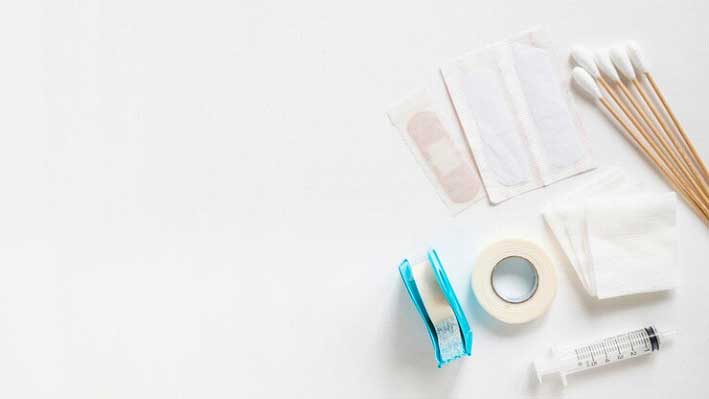
Antimicrobial textiles: A boon or a bane?
These antimicrobial textiles besides affecting the human microbiome may also alter the microbes which are present in the environment when it is disposed, says Dr E Santhini.
Antimicrobials are substances capable of either killing or inhibiting the growth of microorganisms such as bacteria, viruses, fungi, and parasites, play a vital role across diverse fields, including medicine, agriculture, and various industrial sectors. Their importance lies in effectively controlling and preventing the spread of infectious diseases, thereby contributing significantly to public health and the overall well-being of both humans and animals.
In recent times, these antimicrobials have found application in a range of everyday products. They are integrated into dishwashing, laundry, and cleaning products, as well as personal care items. Additionally, antimicrobials are present in air fresheners, footwear and shoe products, refrigerators, storage containers, and textiles. This integration aims to enhance hygiene, reduce microbial growth, and contribute to a cleaner and safer environment for users.
In the case of textiles, products such as personal protective equipment, wound dressings, vascular graft, heart patch, dialyser etc., are used at health care settings for various applications. The textiles used for health care applications are called as medical textiles. These medical textile products not only protect the patients and health care practitioners from the infection and disease transmission but also save the life of many patients. In recent years, functionalisation of these products with antimicrobials has become the key requirement with the aim to reduce healthcare associated infection (HAI) and to provide sense of cleanliness to the user. Hence the usage of antimicrobial compounds on the textile materials has become the integral part of medical textile product development. As antimicrobial textiles offer various advantages such as infection control, patient safety, reduction of HAI, reduce the number of days of stay in the hospital and increase the shelf life of the textile / medical textile products, their demand is increasing worldwide. But the worrying factor is that the antimicrobial textiles besides being used as medical textiles are also being used for apparel applications.In 2022, the global antimicrobial textiles market size was valued at $ 10914.66 million and is expected to expand at a CAGR of 7.28 per cent reaching 16635.41 million by 2028 (Tech News and Updates, 2023). Projected demand does not include health care applications alone; but other applications also.
Even while the process and efficacy of many antimicrobial materials is suspect due to the process involved (whether it is a coating on the surface of the textiles or by infusing it at the pellet / fiber level?) not being revealed, what is more serious is the impact that they can cause to the human microbiome and the environment.
“Whether antimicrobials are a boon, offering significant benefit or are they a bane posing risks that may outweigh their advantages?”
When compared to the studies which discuss the advantages of antimicrobial textiles in different sectors, the number of studies on its adverse effects is comparatively less and is recently gaining attention among the research and medical communities around the world.Policy makers, medical community, manufacturers, industries, research and academic institutions, besides investing / showing interest on the development of antimicrobial textiles for various health care / hygiene/apparel applications, are also looking at the risks which may overshadow its advantages on its continuous usage. Because, the world has already witnessed the adverse effects of antibiotic resistant microorganisms and the difficulty of controlling the growth of bacteria which have developed resistance to antibiotics.
Penicillin, world’s first antibiotic was widely used in the year 1945 during World War II and was considered as a “miracle drug”. However, the hope for a future, free from infectious diseases, was fleeting as the bacteria started developing resistance to penicillin. In 1962, the first case of methicillin resistant Staphylococcus aureus was reported. Followed by S.aureus, Streptococcus, K.pneumoniae, Acinetobacter sp., etc., have also developed resistance against various antibiotics. Alarmingly, these bacteria have developed resistance against commonly used antibiotics such as methicillin, vancomycin, ciprofloxacin, azithromycin, etc. Whenever the bacteria are being treated with antibiotics, it finds alternate methods to escape from the action of antibiotic. A bacterium once develops resistance, transfers its resistant genes to other bacteria in every cycle of its multiplication. In contrast to mammalian cells which requires at least 21 h to double its population, the bacteria get doubled every 15 to 30 mins and passing on its resistance genes to other bacteria.
In recent times, the bacteria have become smarter and try to discharge by altering their response towards the action of antibiotics.Treating a patient who is infected with antibiotics resistant bacteria is a big task to any health care practitioners and we may lose his life if he is severely infected or not provided with proper treatment. Every year, approx.
7, 00,000 people are losing their battle to antimicrobial resistance (AMR) and another
10 million people are projected to die from it by 2050 (Neelam Taneja and Megha Sharma, 2019). Studies report that India carries one of the largest burdens of drug-resistant pathogens, New Delhi metallo-beta-lactamase 1 (NDM – 1) and is spreading to other countries rapidly. India is the largest consumer of antibiotics worldwide and the sale of antibiotics is increasing rapidly. For a researcher, it requires more than a decade to bring out a commercially successful antibiotic. But the rate of bacteria developing resistance is very quick and some microbes develop resistance as early as 11 days. It happens when the microbes develop mechanisms to evade the action of antimicrobials. The abuse of antibiotics is reported to be one of key reasons for the bacteria to develop resistance.
In contrast to antibiotics, no study has reported the potential of organisms developing resistance to synthetic and metallic compounds. Hence, in recent times, medications are being developed with compounds like quaternary ammonium, silver, copper, zinc, etc. Surprisingly, antimicrobial textiles are also being developed with these compounds. It is generally debated that the bacteria do not develop resistance to these synthetic chemicals / metallic compounds as their mode of action / microbicidal activity is physical destruction and not at the cellular and molecular level. However, we are not far away from having an organism resisting the action of synthetic chemicals and metallic compounds as they are not only used at health care settings but also find applications in all the areas.
Transportations (railways and airlines), personal care (sanitary pads, diaper, wipes, etc), domestic applications (curtain, mattresses, etc.), shirts, school uniforms, inner garments, socks, etc, are very keen in using these antimicrobial textiles as a marketing gimmick. These materials, some or the other, are going to have contact with our skin, which is a home to millions of florae. These florae help humans by preventing colonisation of transient pathogenic organisms, stimulating the skin’s immune system and by synthesising vitamins. When these bacteria are exposed to antimicrobial treated textiles materials regularly, the possibility of the resident flora developing resistance is high; which in turn, can alter the skin microbiome and its functioning. Development of resistance to these antimicrobial materials may go unnoticed till a patient is to be treated with antibiotic or a combination of antibiotic / metallic compounds during any emergencies. In such scenarios, no amount of antibiotics would help the patient as the microbe would have developed a resistance to them. Such scenarios, when witnessed by a larger population due to incessant exposure to antimicrobial materials can be really serious, when we would be grappling for a solution to counter resistant microbes. By the time a solution is found, we could possibly be losing a battle in our effort to protect mankind.
There is also the additional hazard that these antimicrobial textiles can cause to this environment when they are disposed, apart from their affect on the human microbiome. The antimicrobial compounds leached during washing and disposal while reaching the soil can affect the microbes involved in nitrogen fixation, degradation, soil recycling, water recycling, etc. The potential damage that they can cause in altering the microbes present in the environment would be immense and just unimaginable.
While we do need new developments in the segment of apparel / technical /medical textiles, serious thought should be given to the unbridled usage of antimicrobials on textile material in the guise of enabling healthy products. What is needed is both Governmental mandate as well as educating both manufacturers and consumers on the benefits/consequences of using antimicrobial textiles. An informed consumer can well decide whether he/she requires antimicrobial textiles. Government should clearly specify limitations of their usage in certain sectors and mandating manufacturers to define very clearly the following:
- the nature of benefit provided by the material
- its end use
- extent of leaching of the antimicrobial compound in the textile material during washing and disposal and its effective period of efficacy
- the process involved in infusing the antimicrobial protection
- disposal methods and other safety precautions to be taken by the user
Since unfettered use of antimicrobial in future is expected to cause serious repercussions to man and environment, serious thought should be given to its usage. It should be recommended only after its limitations are fully been explained. It would be safer to conclude that its usage be better discouraged to offer a better life not only to humans but also to poor microbes and Mother Earth. Researchers, on their part, should direct their attention towards exploring alternative and/or combinatorial methods for mitigating the impact of these microbes to human.
Details of the author

Dr E Santhini is a Senior Scientific Officer-Gr B and Head in charge, CoE- Medical Textiles, South India Textile Research Association (SITRA). She has got more than 10 years of experience in Medical textiles. Her main specialisation lies in wound dressings, antimicrobial textiles, and PPE. She has published more than 30 publications in reputed journals and filed 2 patents. She has won early career and Young Scientist Research grants from DBT and DST, Govt. of India. She is a member of TXD 36 Committee under Bureau of Indian Standards. Her team at SITRA offers various services ranging from well-established industries to start up in medical textiles.




